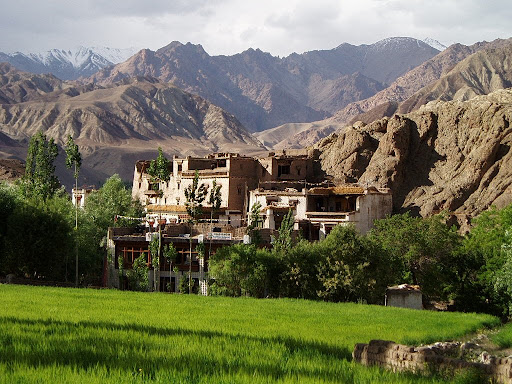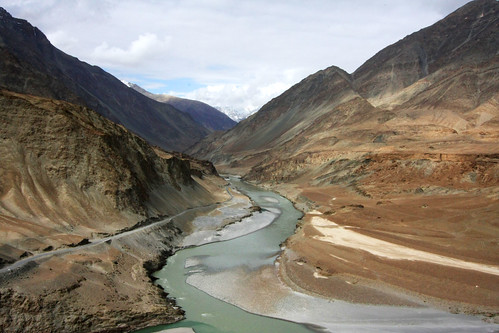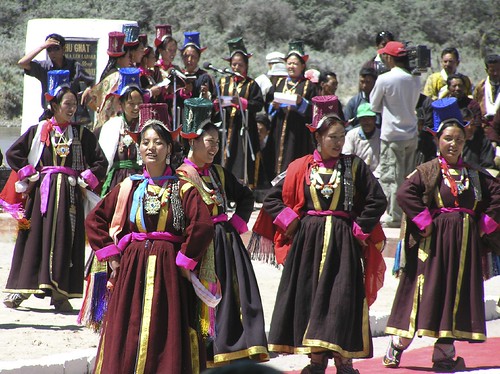

Leh was the capital of the Himalayan kingdom of Ladakh, now the Leh District in the state of Jammu and Kashmir, India. The town is still dominated by the now ruined Leh Palace, former home of the royal family of Ladakh, built in the same style and time as the Potala Palace. Leh is at an altitude of 3,500 meters (11,483ft).
Leh has a cold, arid climate with long, harsh winters from October to early March, with minimum temperatures well below freezing for most of the winter. The city gets occasional snowfall during winter. The weather in the remaining months is generally fine.

River Sindhu :
Sindhu:
In Sanskrit, the river Sindhu means Ocean. This river goes back to the Age when Jayadratha, son of Vriddhakshatra was the ruler of the Sindu Kingdom. It was the time of famous Hindu Epic Mahabharata. And from here, the lands of Sindh came the name of the River Sindhu. Indus Valley Civilization came into existence only after the river Sindhu paved way for them.
Sindhu River:

Originating from Kailash mountain, it covers 550 kms in Jammu and Kashmir. From there it enters Leh, and gets mingled with Zanzkar river. In Punjab it is met with five major rivers of Punjab – Jhelum, Chenab, Ravi, Beas and Satluj.
The word Sindhu originates from the word sidh meaning to keep off . The river Sindhu has been mentioned 176 times in Rigveda, 95 times in plural, used in the generic meaning. In Rigveda – the Ancient Indian Scripture( 1500 B.C.), is the earliest chronicle of Aryans. Aryans were the people from whom the name of the country evolved and came to be known as Hindustan to the entire world.
There is a lot of political significance to the River Sindhu due to its geographical location. It runs along the Indo – China Border. Entering India from the south eastern Ladakh near the river Gutang at an altitude of 4,200 ft from sea; it follows the northwest course in the Ladakh Range and Zanzkar Range in the South. The main tributeries of the Sindhu River in the Ladakh Region of Jammu and Kashmir are Hanle River, Gurtang River, Shigar River, Shigar (South) River, Shyok River, Gilgit River, And Astor. In India it mingles with Ganges in the end. Nubra and Drass Rivers too act as tributaries to Sindhu River.
Places to See:
Leh Palace :The town is dominated by the royal palace, known as Leh Palace. This was built by King Sengge Namgyal in the 17th century, but was later abandoned when Kashmiri forces besieged it in the mid-19th century. The royal family moved their premises south to their current home in Stok Palace on the southern bank of the Indus. The Leh Palace is nine storeys high; the upper floors accommodated the royal family, the stables and store rooms are located in the lower floors.
Sindhu Darshan Festival : This Festival, also known as Indus (according to the Indus River which originated the Sindhu River), is held every year in the month of June in Leh and Ladakh. The Sindhu Darshan Festival projects Sindhu as a symbol of multi-dimensional cultural identity, communal harmony and peaceful co-existence in India. This festival is also a salute to the brave soldiers of Kargil, Siachin and other High Altitude places. Filled with colors of harmony, its a must watch festival for those who land in Leh and Ladakh in June. This festival is held on Guru Poornima Day.
Monasteries : The places from where Sindhu Passes - Leh and Ladakh are famous for its Buddhist Monasteries. These Monasteries are a symbol of Buddhist Culture. A must see for anyone visiting Leh and Ladakh.

Keep reading...





